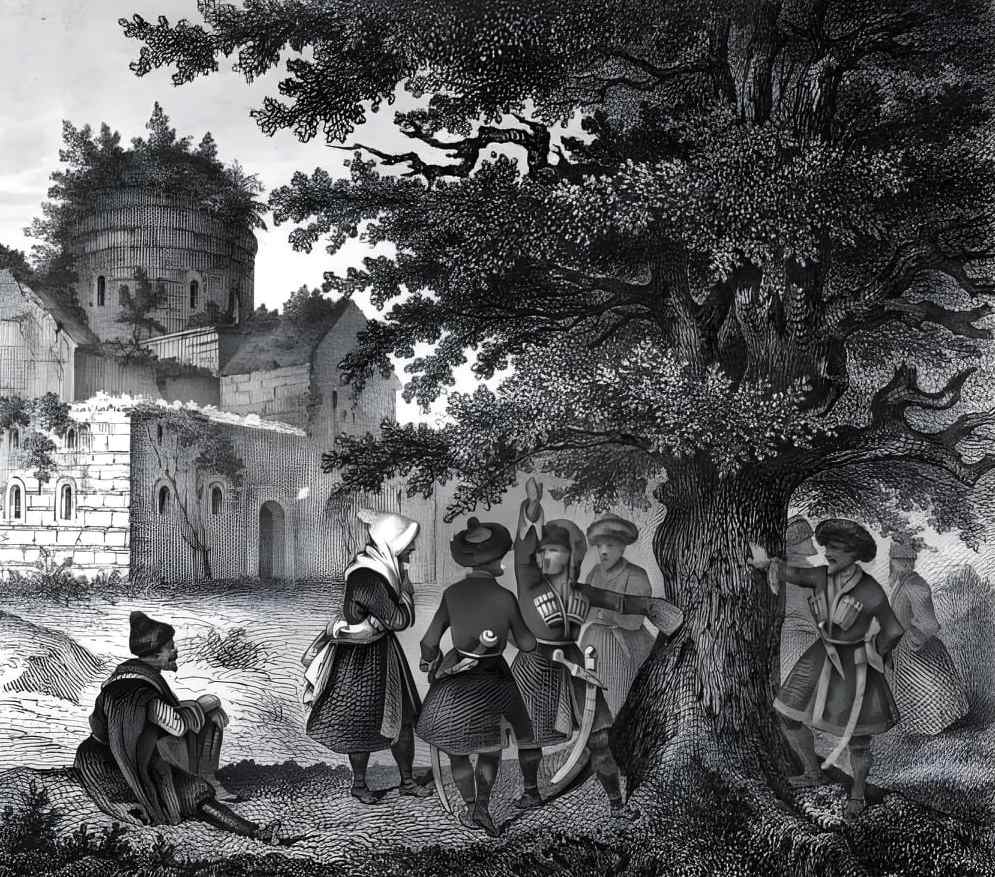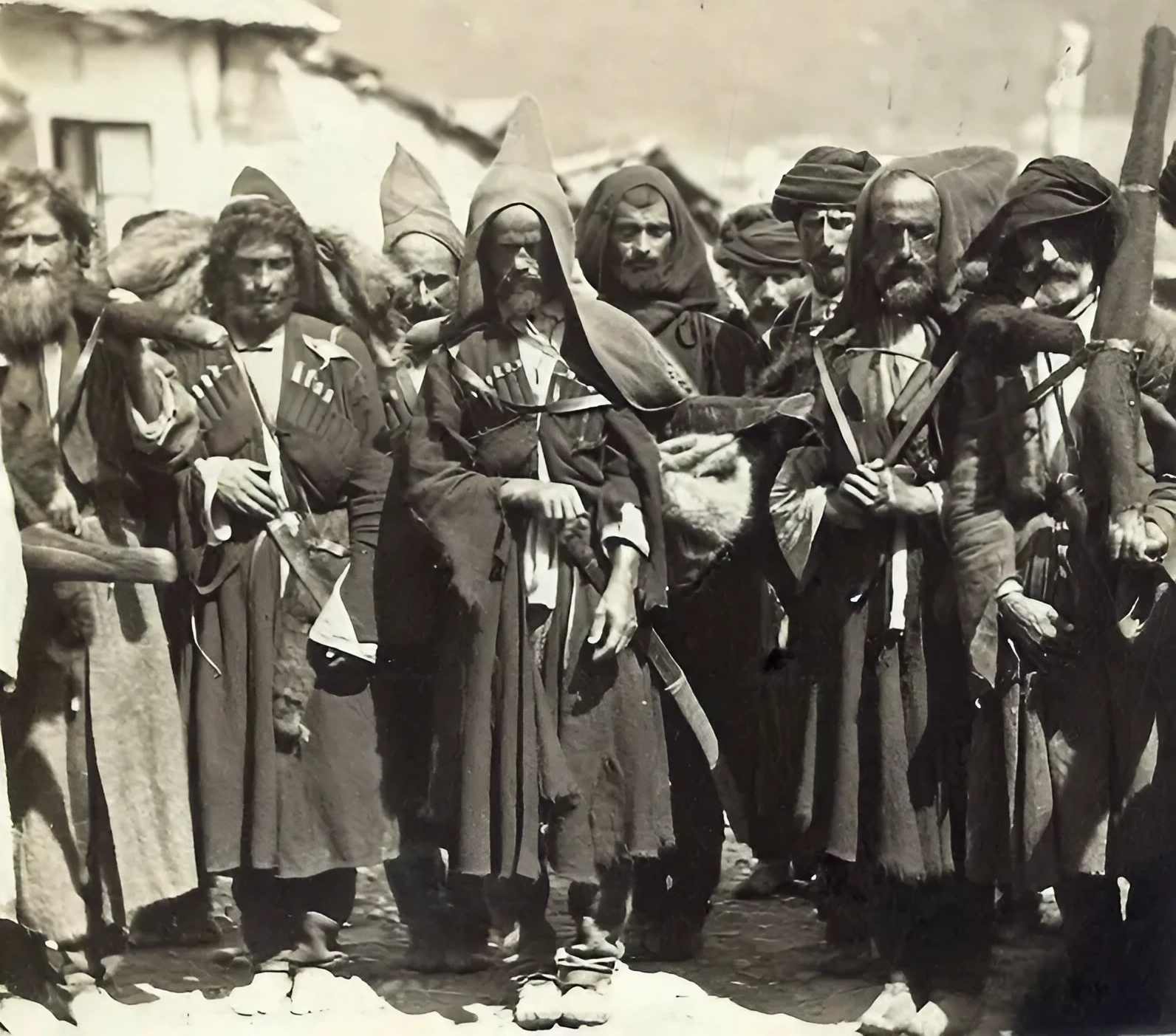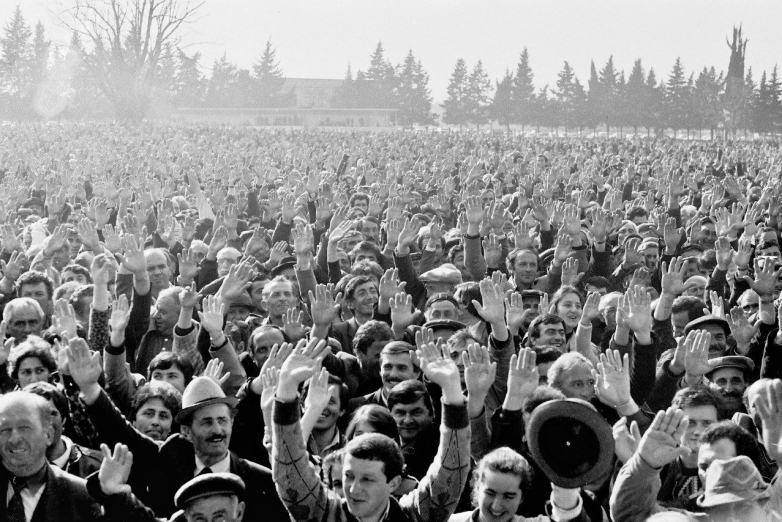Symbol of Resilience and Spirit: The Significance of the Lykhny Linden Tree for the Abkhaz People

From ancient times, the Abkhaz people revered certain trees as sacred, including linden, walnut, hornbeam, yew, oak, beech, and others. Abkhazians held prayer rituals, public gatherings, and meetings under these sacred trees.
Read on to discover the significance of the Lykhny linden tree, which was damaged by unknown individuals, in this article.
Every nation has symbols associated with various historical events. For the Abkhaz people, one such symbol is the three linden trees that grow in the historic Lykhny meadow. According to historian Aslan Avidzba, these trees have witnessed important events for the Abkhaz people.

Abkhazians held prayer rituals, public gatherings, and meetings under sacred trees.
One such event was the famous Lykhny Uprising of 1866. At that time, Colonel Konyar, the head of the Sukhum Military District, conveyed the will of the Russian tsar to the Abkhaz people, stating that the tsar had abolished serfdom and granted freedom to all peasants, including the Abkhaz. They could now buy back their lands. The peasants were outraged and replied to the tsar's messenger that the Abkhaz had never been serfs and that no one could grant them the freedom they had never lost. They argued that the lands they were being offered to buy had belonged to them since time immemorial, and they had no intention of purchasing what was rightfully theirs.
+ Centuries-Old Linden Tree in Lykhny Unlikely to Survive Vandalism, Says Scientist
+ Abkhazian Officials Respond to Centuries-Old Tree Vandalism in Lykhnashta Meadow
+ In Pictures | Preserving Life: Saving a Linden Tree in the Village of Lykhny
As scholar Batal Kobakhia writes, the messenger repeated the tsar's will three times, and when he tried for the fourth time, an Abkhaz sitting in a linden tree fired a shot. This initiated a shootout that escalated into the Lykhny Uprising. Konyar and his entourage fled to a palace where they were eventually killed. The uprising was brutally suppressed. Many participants ended up in prison, but the most tragic consequence of those events was the forced migration, known as Mukhadzhirism.

+ Lykhny Uprising, or translation-difficulties: what happened in 1866
+ Thirty years of "guilt" (1877-1907), by Stanislav Lakoba
Nearly half a century later, another historic event took place on the Lykhny meadow – a gathering of Abkhaz representatives following the start of World War I. It was here that units were formed that would later be called the famous "Abkhaz Hundred."
Lykhny gatherings and the first congress
In the second half of the 20th century, almost every 10 years, the Abkhaz people expressed their dissatisfaction with their unjust situation on their land and the oppression they faced from the Georgians through mass demonstrations. On March 18, 1989, over 35,000 people gathered at Lykhnashta (Lykhny Meadow), where they proposed the withdrawal of Abkhazia from Georgia and the restoration of its status as a union republic.
A “Soviet Socialist Republic of Abkhazia” was initially declared on 4 March 1921 alongside the “Soviet Socialist Republic of Georgia”. On 21 May 1921, a decision was made on the incorporation of Abkhazia in a Georgian federation, and, in a separate treaty of union, signed on 16 December 1921, the two republics agreed on especially close military, political, and financial/economic co-operation. Abkhazia joined the Transcaucasian Federation as an equal partner of Georgia, Armenia, and Azerbaijan, and, as a member of the Federation, participated in the founding of the Soviet Union as a full subject of international law. “In this way, the sovereignty of Abkhazia was not limited by the Georgian constitution, but solely by that of the Transcaucasian Soviet Federal Socialist Republic and the USSR. Abkhazia thus retained the formal right to secede from both federations without reference to Georgia. With not a little help from Georgians Joseph Stalin and Lavrenti Beriya, Abkhazia was transformed into an Autonomous Republic of Georgia in 1931. This represented not only the removal of its status as a republic, i.e. a legal downgrading, but also opened the door to a policy of Georgianization.
― 'The Abkhazia Conflict in Historical Perspective', by Eva-Maria Auch (In: IFSH (ed.), OSCE Yearbook 2004, Baden-Baden 2005, pp. 221-235.)
In October 1992, the World Abkhaz-Abazin Congress was formed on the Lykhny meadow. This event took place during a difficult time for the Abkhaz people – amid the Patriotic War.
The famous Abkhaz-Abazin Congress was established on the Lykhny meadow on the second day after the liberation of the northwestern part of Abkhazia from Georgian occupiers. It was under this linden tree (the one damaged by unknown individuals) that the founder of our state, Vladislav Ardzinba, spoke.

This linden tree bears witness to the fateful events for the Abkhaz people. Therefore, an attempt on this tree is an attack on the historical memory of the Abkhaz people. It is a sabotage against the Abkhaz people," added historian Aslan Avidzba.
Symbol of resilience
For the people of Abkhazia, the Lykhny linden tree has become a symbol of spirit and resilience. Three such symbols grow on the Lykhny meadow. A few years ago, lightning struck one of the linden trees, located in the centre of the meadow. According to one of the elders of the Gudauta region, Roland Zantaria, the local authorities did not have the heart to cut down the historical tree, even though it was doomed to die.
Roland himself planted two young linden trees near the princely palace in Lykhna 10 years ago. In the elder's opinion, attempting to cut down a centuries-old tree with historical significance is a great sin.
"Today, by the will of the Almighty, we see that this tree is reviving and producing new shoots," he noted.
A person unfamiliar with Abkhaz reality might wonder why there is so much noise and emotion over a damaged tree. But one must know at least a little bit about the history of Abkhazia.
― Vitaly Sharia | Attempt on the Spiritual Symbol of Abkhazia
The act of vandalism committed in a sacred place for every Abkhaz person was condemned by the country's president, Aslan Bzhania. He instructed law enforcement agencies to take all measures to identify those involved in the crime.
The public called the act of damaging the centuries-old linden tree in the village of Lykhny a sabotage and suggested that the perpetrator voluntarily surrender to the police.
Lykhny is one of the largest villages in Abkhazia. Abkhazian ruling princes lived here, as well as Nestor Lakoba and prominent Abkhaz scholars Georgiy Dzidzaria and Konstantin Shakryl. Lykhna is a historic place where national gatherings took place and various sporting and cultural events are still held.
